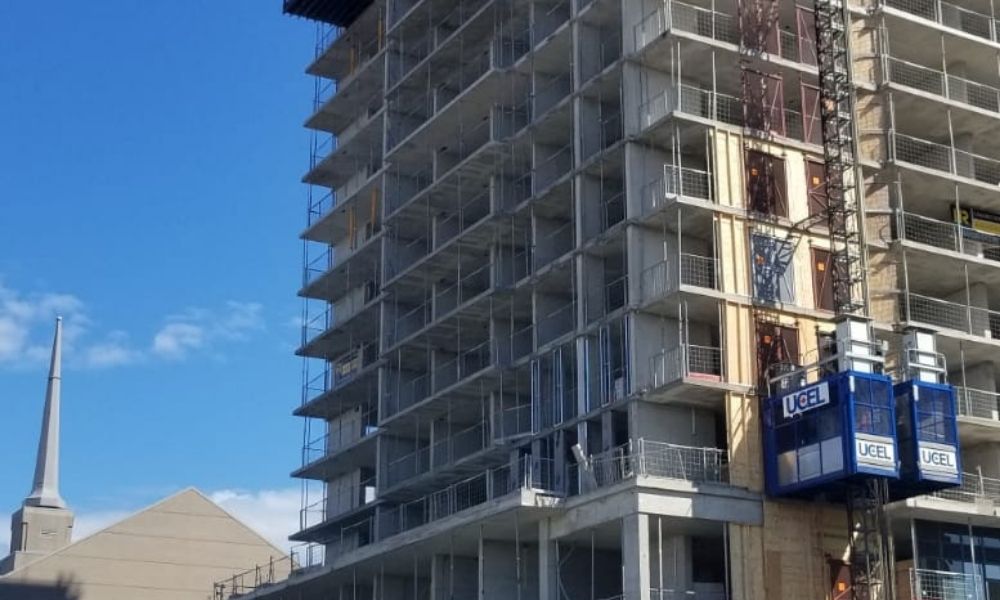Using a hoist on the job site is often a necessity. Whether renting or purchasing, a hoist is an investment to improve efficiency and safety on the job. Understanding the ways to optimize your hoist system will improve both of those aspects. There is more to a hoist than the hoist itself—it is an entire system, and each part plays an important role.
Choose the Proper Hoist for the Job
The best way to optimize your hoist system is to choose the right hoist for the job in the first place. The purpose it will be used for, weight limits, and the environment it will be in all affect the choice in a hoist. Choose wisely and the job will run smoother.
Enclosures and Landing Gates
Part of the hoist system is the landing gate and enclosure. Once on the lift, personnel and materials need to be lifted and exited safely. To make the most of your hoist system, choose the correct enclosure and landing to go with it.
Enclosures come in mesh or solid construction and are integrated with the gate system of the hoist for quick installation and safety. They protect workers on the landing from accessing the hoistway. The right enclosure ensures personnel is safe.
Construction landing gates are installed to protect personnel from falling or getting injured from the moving hoist. They are offered in custom sizes, bi-parting and single-parting gates, and can swinging or sliding. Sometimes, they must be cantilevered off the edge of landings to bridge the gap between building-and-hoist. Knowing your options is critical to optimization.
Extra Safety Features
Extra safety features can be added as one of the ways to optimize your hoist system. Intercom systems, emergency stop buttons, and emergency lowering systems, along with overload and overspeed alarms are just a few ways you can make the most of your hoist system on the job site.
Optimizing the entire hoist system improves job performance and efficiency, saving time and money and protecting personnel…and nothing is more important than that.
